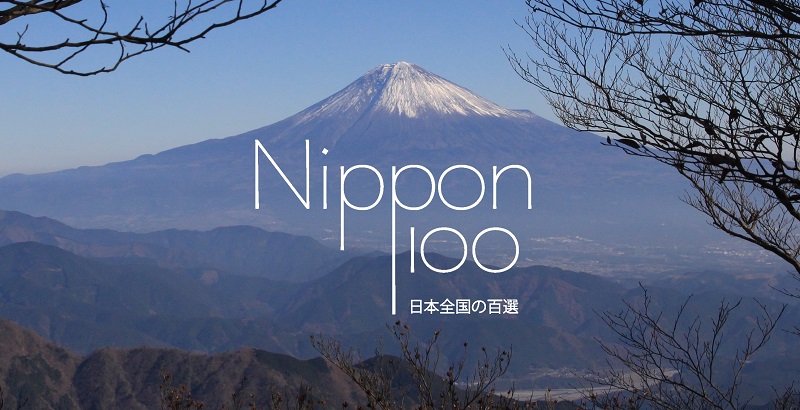According to travel guides, Japan is a country of tradition and technology at the same time. And even though the statement is not original, it often appears to be true. Kanazawa is the living proof of that, offering both preserved Edo areas and contemporary architectures.
More than that, Kanazawa by itself is one of the Heisei 100 landscapes, and thus another step toward our challenge achievement!
The city, while offering a lot to explore, was mostly ignored by travelers for a long time. Precisely until 2015, when the Hokuriku Shinkansen opened. From that time, Kanazawa has only been 2:30 hours away from Tokyo and covered by the JR Pass.
From Kanazawa, Tokyo and Kyoto seems to be really far away. The town developed its own culture and way of life, isolated from the big cities and Japan’s troubled history by the Japanese Alps (to be crossed with the scenic Alpine Road). At the beginning of Edo period, the Maeda clan – the one ruling over Kanazawa – decided to remain quite neutral and encouraged culture and fine arts instead of war ones.
The powerful family beyond the mountains was during the whole Edo period Japan’s second one, in term of widest ruled-over area and rice yearly production.
 |
 |

Once again thanks to its geographic isolation, and thanks to not being a military thread, Kanazawa is Japan’s second largest city after Kyoto to escape destruction during World War II.
Geisha and samurai areas in Kanazawa
Among Kanazawa’s preserved areas, the city three geisha districts are to be discovered as they were two centuries ago. The main one is Higashi Chaya, to the East. The “chaya”, the teahouses where Geisha performed, are still there, many of them with their fancy red paint – clearly one of the most expensive back in the days. At the time, they were among the only buildings authorized to build a second floor.
Today, five of them are still active. While many became restaurants, minshukus or local craftsman shops. Among them, the Shima ochaya (nowadays a museum, open everyday from 9am to 6pm, 500 yens) is the only in Japan registered as an Important Cultural Property. Not far away, the Hakuza shop allows to discover one of Kanazawa’s most famous production: gold leaves.
Higashi Chaya is divided between three main streets, whose size were commensurate to the customers’ wealth. The whole area dated back from the 1820s, when the city lord decided to gather the chaya in order to prevent the samurais from going there.

 |
 |
 |
 |

 |
 |
 |
 |

 |
 |
The two other Geisha districts, equally well preserved, are the neighboring Kazuemachi (immediately across Asano river) and further Nishi Chayagai (West of Kanazawa and less visited by tourists).
 |
 |
Another district of Kanazawa is close enough to a time travel to Edo Period. The samurai’s residences area of Nagamachi did not change a lot for the past 400 years. The alleys, doors and walls (the last ones’ level being related to the rank of the protected house’s owner) are the same. One restored residence, Nomura-ke, is open to the public and thus allows to learn more about samurai’s history.
 |
 |

 |
 |
A bit further from Kanazawa’s city center, Onomachi is not yet popular among the travelers, while the visit is definitely worth it. The former warehouse and harbour district offers another look into traditional Japan. The one of commercial sailing and Koji, a fungus used to brew soy sauce and produce miso. To be discovered, along with soy sauce ice cream tasting, during Yamato hundred-years-old factory’s visit.

 |
 |


 |
 |
Ancient districts are not the only sight of Kanazawa. Omicho central covered market, located at the same place and famous for over than 300 years, is the perfect way to discover Kanazawa’s specialties. The market is on the way from Higashi Chaya to Nagamachi.
Kanazawa’s gardens
The city center of Kanazawa is occupied by the wide former castle park and by the unique Kenroku-en, one of Japan’s three famous gardens (310yens, everyday from 7/8am to 5/6pm). Its layout had been linked to the Maeda clan for over two centuries. The meaning of Kenroku-en is “garden of the six sublimities”. Literally the garden is built around three pairs of opposed qualities: spaciousness and seclusion, artificiality and antiquity, and abundant water and broad views.

 |
 |

 |
 |
 |
 |
Another garden should not be missed on the other side of the castle park, the Gyokusen’inmaru, whose history began even before its famous neighbor’s one. But unfortunately, that one was destroyed at the beginning of Meiji Period, and was rebuilt recently (open everyday from 9am to 5pm).

There are several museums in the same area than the two gardens, in the park neighborhood. Apart from many different interesting materials, two of them also offers a special architecture. The 21st century museum of contemporary arts circular building was designed by Sanaa (known in France for the Louvre-Lens, 1000 yens for the temporary exhibits but free for the other areas, closed on mondays).
The D.T. Suzuki Museum, yet a small museum commemorating the life and works of the zen philosopher Suzuki Daisetz Teitaro, has an unique shape made to encourage meditation, by Taniguchi Yoshio.

 |
 |


How to get there?
From Tokyo, the Hokuriku Shinkansen (about 14000 yens without JR Pass), 2:30 to 3 hours. Buses are less expensive (6000 yens) but longer (about 8 hours). Kanazawa is not far from Shirakawa-go, the world famous steeply pitched thatched roofs village (about 1:45 hour and 2000 yens, by bus only).
While Kanazawa is small enought to be explored by foot, the Kanazawa Loop Bus is convenient to go around the city and save time (stops in every districts, day pass for 500 yens or 200 yens per trip).












